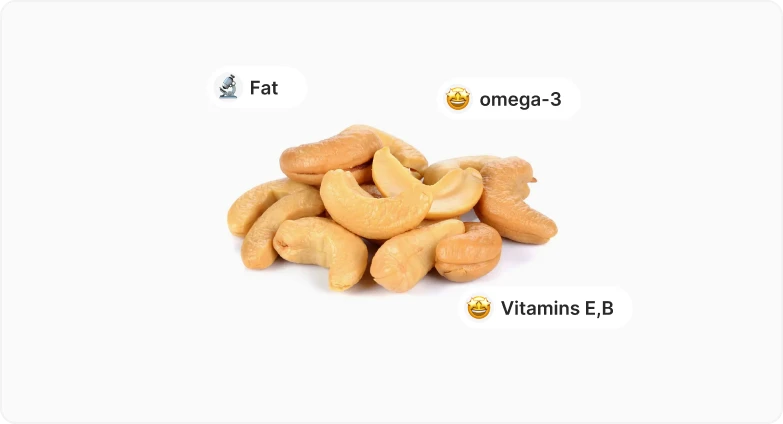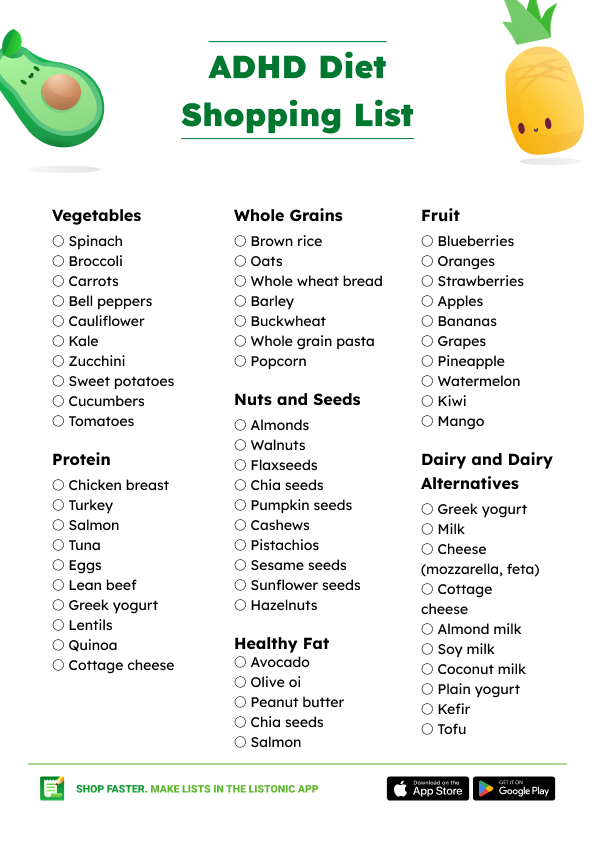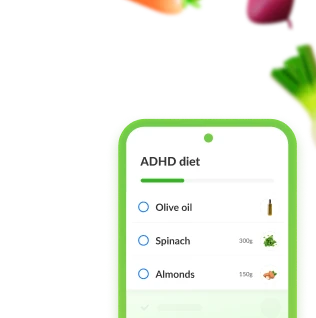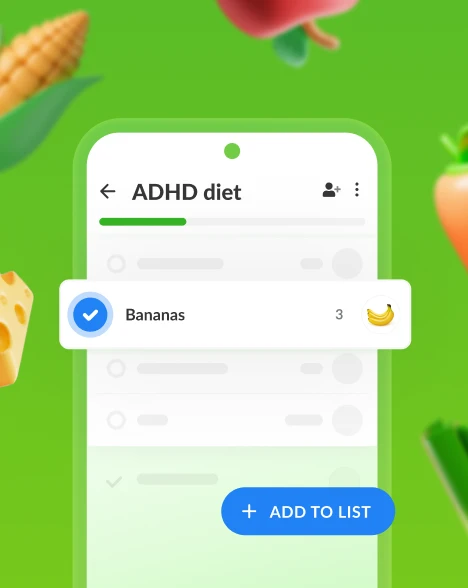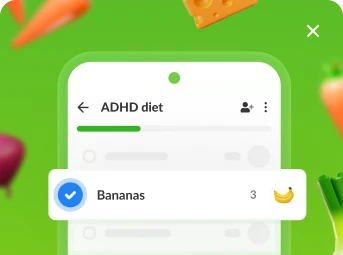Privacy Policy | Terms of services | Consent choices | © 2006-2024 Listonic. All rights reserved. Listonic Dev, and Listonic Ads are part of Listonic.
ADHD Diet Shopping List (+ PDF)
January 22, 2025
ADHD (Attention-Deficit/Hyperactivity Disorder) affects an increasing number of children and adults worldwide. While this neurodiversity is not a severe disease, it can significantly complicate the daily lives of many people.
There is no universally recommended diet for ADHD. However, it’s been proven that certain dietary changes may help alleviate ADHD symptoms. For this reason, we have created a comprehensive 2025 guide and a handy shopping list to support individuals struggling with ADHD on their journey towards improved well-being.
Table of contents
ADHD Diet Shopping List
ADHD Diet Guidelines
ADHD Diet Shopping List Breakdown
What Else to Keep in Mind?
Conclusions
ADHD Diet Shopping List
ADHD Diet Guidelines
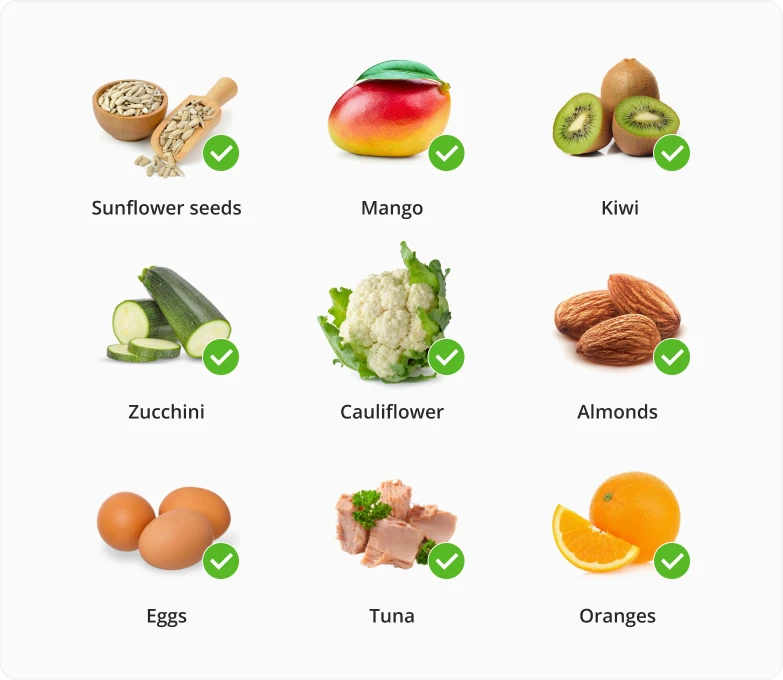
Primarily, you should maintain a balanced diet. This means consuming a variety of fruits, vegetables, lean proteins, whole grains, and healthy fats.
Adequate protein intake, found in sources like chicken, fish, eggs, and legumes, can support focus and concentration.
Including omega-3 fatty acids, found in fatty fish, walnuts, and flaxseeds, may also be beneficial for brain health.
Remember that many neurodivergent people – including those with ADHD – have specific sensory preferences when it comes to food. If you have such sensory sensitivities, explore a variety of textures and cooking methods to find a tolerable and enjoyable option.
People with ADHD may also want to analyse potential food sensitivities or allergies that could worsen their symptoms. You can try to eliminate certain foods, such as gluten or dairy, to identify your triggers.
Lastly, staying hydrated is important for brain functions. Drink plenty of water throughout the day to support your cognitive abilities and prevent fatigue.
ADHD Diet Shopping List Breakdown
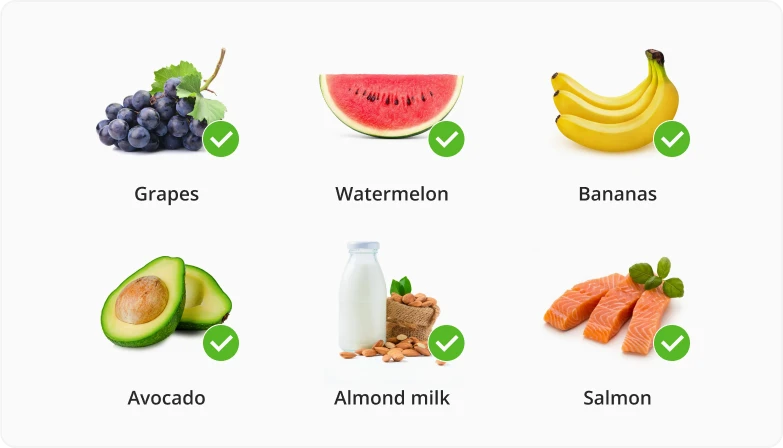
Proteins
Protein-rich foods provide essential amino acids that support neurotransmitter function in the brain. These neurotransmitters, such as dopamine and norepinephrine, play a role in attention and focus, making protein an important component of the ADHD diet.
Vegetables
Nourishing vegetables, particularly the most colorful ones and leafy greens, contain many essential vitamins, minerals, and antioxidants. These nutrients support brain function and can help reduce inflammation, potentially alleviating ADHD symptoms.
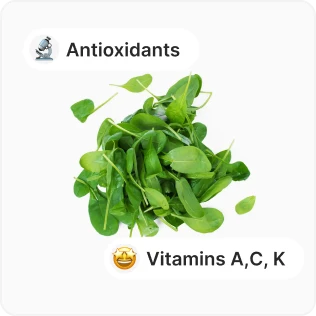
Fruit
Fruits are rich in vitamins, minerals, and antioxidants that support brain health and overall well-being. They are a natural source of energy without the artificial additives found in processed sweets. They help to stabilize blood sugar levels and prevent energy crashes often associated with ADHD symptoms.
Whole Grains
They are a great source of complex carbohydrates, which prevent blood sugar spikes and support stable energy levels. It can contribute to improved focus and attention span.
Nuts and Seeds
They are rich in healthy fats, protein, and fiber – nutrients that support brain health. Additionally, the omega-3 fatty acids found in some nuts and seeds, such as walnuts and flaxseeds, have been associated with improved cognitive function.
Dairy and Alternatives
Dairy products, like Greek yogurt and cottage cheese, are good sources of protein and calcium. Calcium is important for neurotransmitter function and may have a positive impact on attention and mood. Plant-based alternatives are suitable options for people with lactose intolerance or for vegans.
Healthy Fats
Healthy fats, such as those found in avocados, olive oil, and nuts, are important for brain health. They provide essential fatty acids that support cognitive function and can help maintain stable moods.
Get a ADHD Diet Grocery List on Your Phone!
Add & remove items
Sort items by store aisles
Share the list with your partner
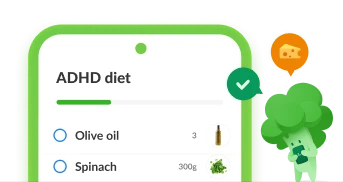
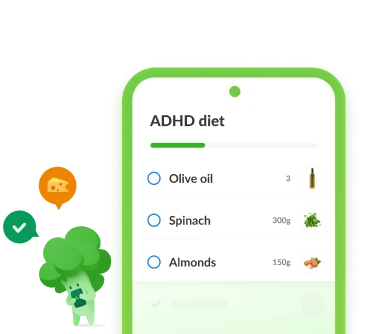
What Else to Keep in Mind?
What Foods to Avoid?
While there is no definitive list of foods to avoid when you have ADHD, you may find that certain products or ingredients make your symptoms worse.
Added Sugars: Limit or avoid foods high in added sugars, such as fizzy drinks, candies, pastries, and processed snacks. These can cause blood sugar spikes and contribute to hyperactivity and inattention.
Artificial Additives and Preservatives: Some people with ADHD may be sensitive to artificial additives and preservatives commonly found in processed foods. Reading food labels and opting for whole, minimally processed foods can help reduce exposure to these ingredients.
Processed Snacks: Highly processed snacks often lack essential nutrients and may contain artificial additives and trans fats. Choose whole food alternatives, like fruits, vegetables, and homemade snacks, whenever possible.
Allergens and Intolerances: Certain people may have sensitivities or allergies to specific foods, such as gluten or dairy products. These sensitivities are hard to identify because they vary among individuals, but it may be helpful to eliminate suspected trigger foods and monitor symptoms to notice any potential connections.
Individual Triggers: You can keep a food diary to track how different foods impact your ADHD symptoms. You may find that specific foods, even those not typically associated with ADHD, affect your focus, energy levels, or mood.
Conclusions
Hopefully, now you have a better understanding of the ADHD diet and you can effectively use your dietary choices to alleviate the symptoms of your neurodiversity in 2025 and beyond.
Remember that we have provided you with a helpful shopping list available for download in PDF format or for use in our Listonic app. The mobile version allows you to edit and customize the list. Best of luck on your journey towards well-being!
